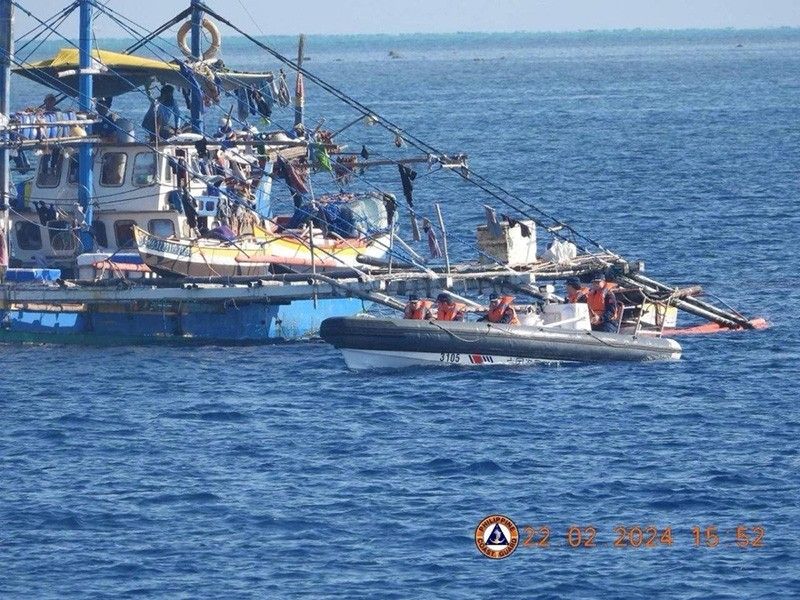Navy sees no threat from 2 Chinese fishing boats in country's east coast

MANILA, Philippines — The Philippine Navy said the two Chinese fishing boats seen meandering in the waters east of northern Luzon are "not alarming" and part of the usual maritime traffic monitored within the Philippines' exclusive economic zone.
Rear Admiral Roy Vincent Trinidad, Navy spokesman for the West Philippine Sea, said the Navy is already coordinating with the relevant government agency to "address" the presence of fishing boats—not just from China but also from other nations in the region—in the Philippines' EEZ.
"This is not alarming. It's not only the Chinese fishing boats that we monitor. There are other fishing boats from other countries all over our EEZ, including [Association of Southeast Asian Nation] countries and the Pacific Island states," Trinidad said in a press conference on Tuesday, October 29.
While he could not confirm the exact location of the Chinese vessels as of today, Trinidad confirmed based on reports received yesterday, October 28, the two Chinese fishing vessels were spotted inside the Philippines' EEZ but outside its territorial sea, specifically 32 nautical miles from shore.
"It's out of the territorial sea... We support whatever government agency would respond to reports like that," Trinidad said.
What's the difference? The territorial sea refers to the 12-nautical-mile belt of coastal waters over which a country exercises full sovereignty. Meanwhile, the EEZ extends up to 200 nautical miles from the baseline, where the state has the exclusive right to explore and use marine resources.
A country does not have full sovereignty over its EEZ — meaning freedom of navigation and overflight by foreign vessels and aircraft is allowed. However, a country retains the right to regulate economic activities such as fishing and oil exploration in the waters within its EEZ.
Trinidad said the two Chinese fishing boats may have already gotten closer to the country as of this morning, but he sees them as "just one of the hundreds [of vessels] on a daily basis."
"Unless there is a more specific report that would give us reason to zero in on a particular fishing vessel or a particular ship out there then we treat this all as fishing vessels that are within our EEZ," Trinidad said.
"These are just part of the normal reports we get. Unless it will raise a concern on our side, then we give it more attention. But for normal fishing boats… we don't give it special attention unless necessary," he added.
Maritime expert Ray Powell, who monitors China's activities in the South China Sea as director of SeaLight, earlier reported two Chinese vessels spotted some 20 nautical miles from San Ildefonso Peninsula in Aurora's Casiguran town.
The two Chinese fishing boats are also not Chinese maritime militia vessels, Trinidad said. This refers to China's fleet of commercial fishing vessels that act in concert with Chinese law enforcement and military to help assert Beijing's territorial claims.
The ambiguity of Chinese maritime militia vessels makes them difficult to identify and usually requires a range of approaches that focus on the vessels' behavior, such as traditional on-site reporting and remote sensing data.
"Our monitoring tells us that [Chinese maritime militia vessels] are in the West Philippine Sea. Fishing vessels are all around," Trinidad said, adding: "Although on a normal day, these are fishing vessels that have been tapped to act as force multipliers of the [People's Liberation Army] Navy."
The spokesman said Navy considers various factors, including weather conditions, when monitoring the presence of foreign vessels in the country's EEZ.
In the aftermath of a strong typhoon, the Navy typically sees an increase in maritime traffic, he added. This typically goes down once the storm has passed.
- Latest
- Trending
































